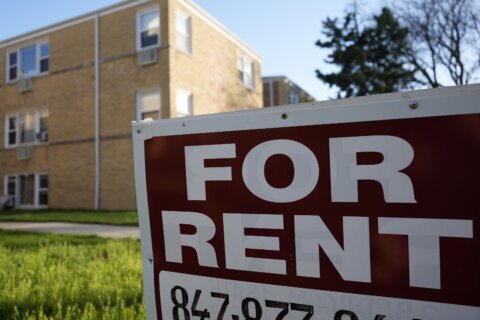It’s no secret that the counter-movement to big, sprawling homes has reached the mainstream — and it’s known as the tiny home.
Tiny houses are exactly as they’re described: small homes that are often built on a trailer to be portable. The maximum square footage for tiny living varies by the company or individual, but these small dwellings are typically under 500 to 700 square feet. Tiny homes are often designed to meet function first — whether it’s a loft bed or composting toilet — and can cost less than $10,000 and up to $100,000, depending on the size, style and functionality of the space.
Interest in tiny homes gained momentum during the recession that began in 2007, as people sought a simpler, less expensive way to live. And as the U.S. pulled itself out of economic crisis, the desire for simple living didn’t wane.
What started as a very small community that prefers to live in stylized small square footage has grown to be widely recognized as a movement to combat the growing size of traditional homes.
“I still consider it, frankly, a fringe movement, in the best possible way … but I think we just really hit a tipping point where it went into general public awareness,” says Ryan Mitchell, creator of the tiny houses and simple-living blog The Tiny Life.
[See: 9 Alternative Building Materials to Consider for Your Home.]
Today, even if people aren’t necessarily planning to live tiny, many are interested in the option, watching others make the move to small spaces on shows like “Tiny House Hunters,” “Tiny House Nation” and “Tiny House, Big Living” on HGTV.
Dan Louche, founder of Tiny Home Builders, a DeLand, Florida-based company started in 2009 to design and build portable tiny homes, says the network attention that largely began in 2014 brought the previously small community to the forefront, expanding the niche industry with a larger customer base and making it more recognized by other parts of the real estate industry, from appliances that fit the tiny lifestyle to insurance on smaller dwellings.
“Things have gotten easier because everybody knows about tiny houses, so now there’s a lot more companies trying to jump on that bandwagon — and not just tiny-house companies, but traditional financing like SunTrust and insurance companies,” Louche says.
While the added attention and greater industry involvement has made many aspects of tiny homebuilding and tiny living easier, it’s still an alternative way of living compared with traditional homes or renting an apartment.
Near Seattle, real estate broker Matt Parker, with Keller Williams Realty Puget Sound, says many of his homebuyer clients are now hoping to find a space that is smaller and more designed to maximize functionality than the large floor plans common among homes built in the last 30 years. But zoning requirements and lending for new construction are structured to favor bigger construction since it brings better returns.
“The demand is there [for tiny homes] … but the product is not there,” Parker says.
To meet homebuyers’ changing desires, Parker says it will likely take a significant shift in the real estate industry and some careful planning. He sees tiny homes as a much more affordable option for living (he is even hoping to build one for him and his wife), but zoning and lot sizes better suited to tiny homes would need construction and zoning requirements to ensure the structure built on the property is an improvement on the land, which requires the homeowner to make a more significant investment in the building materials and design.
“It’s almost like you have to adopt Santa Barbara [California] aesthetic restrictions and city lot sizes, and some mix of those would lead to a beautiful future, in my opinion. You want people spending money on these still — you don’t want people just cheaping out,” Parker says, pointing to Santa Barbara’s ordinances and guidelines that encourage neighborhood compatibility, consistent design and quality craftsmanship for single-family homes.
[See: 10 Ways to Save Energy and Reduce Utility Bills at Home.]
Even with tiny living’s growing popularity, Parker, Mitchell and Louche all stress that the lifestyle isn’t right for everyone. Before you sell all your belongings that don’t fit in 100 square feet, ask yourself these questions:
Are you ready for less? If you feel like you’ve got more square footage than you can handle, it may be time to look tinier. “Most people don’t think about approaching housing differently. … There are other options,” Mitchell says.
But before you start building that tiny house that will restore simplicity, consider the things you can’t physically downsize. If you have a large family that isn’t excited about living that close, pets that need more space than a tiny home allows or a job that requires you to be in a city where a place to keep your small house is hard to find, maybe the lifestyle isn’t right for you just yet.
Do you have the financial means? A tiny home certainly costs less than a traditional home, but it’s still more than many people have on hand. While some lenders have started issuing tiny house loans, including online lenders Backed and SunTrust, it’s not a part of the standard mortgage industry yet.
“We’re outsiders. They’ll give us a loan to build this McMansion, but we don’t want to do that,” Parker says. “That pathway is not grooved in the mortgage industry right now,” he adds.
Can you commit? It’s not just a matter of being able to downsize to a trailer’s worth of belongings. Living in such a small space requires a commitment to simplifying your entire lifestyle. Otherwise, Mitchell says you can find yourself going back to a traditional home all too quickly.
“It’s really doing the deeper work with yourself, that kind of introspectiveness that is setting the stage to live in a tiny house. Because if you don’t do that work, you’re going to be miserable,” Mitchell says.
[See: 10 Ways Millennials Are Changing Homebuying.]
Could you embrace the tiny lifestyle in another way? If you find that maybe you’re not ready to squeeze into a tiny home, that doesn’t mean you can’t use the movement to simplify your life.
Tiny living isn’t just about the space, but taking on a mentality of simplification. Mitchell says the popularity of the tiny house movement can help encourage people to simplify their lives by choosing to take on less debt or less space, too much of which can be overwhelming.
“They decide that they really only need, to be happy, a 1,200-square-foot house … for much less than they’re approved. They could pay off their mortgage much quicker,” Mitchell says.
More from U.S. News
Current Design Trends That Will Date Your Home
12 Home Improvement Shortcuts That Are a Bad Idea
Weird Home Features That May Confuse Homebuyers
The Big Impact of Tiny Homes: How Little Houses Are Changing Real Estate originally appeared on usnews.com







